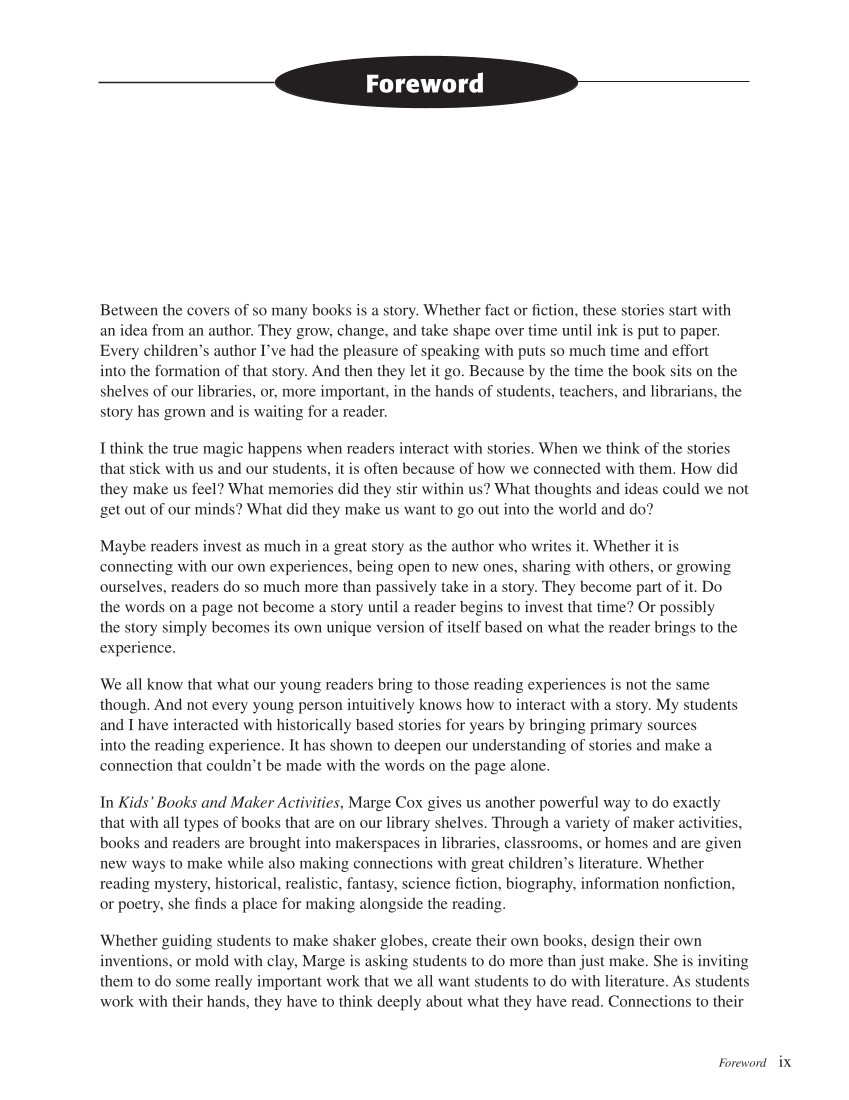Foreword ix Foreword Between the covers of so many books is a story. Whether fact or fiction, these stories start with an idea from an author. They grow, change, and take shape over time until ink is put to paper. Every children’s author I’ve had the pleasure of speaking with puts so much time and effort into the formation of that story. And then they let it go. Because by the time the book sits on the shelves of our libraries, or, more important, in the hands of students, teachers, and librarians, the story has grown and is waiting for a reader. I think the true magic happens when readers interact with stories. When we think of the stories that stick with us and our students, it is often because of how we connected with them. How did they make us feel? What memories did they stir within us? What thoughts and ideas could we not get out of our minds? What did they make us want to go out into the world and do? Maybe readers invest as much in a great story as the author who writes it. Whether it is connecting with our own experiences, being open to new ones, sharing with others, or growing ourselves, readers do so much more than passively take in a story. They become part of it. Do the words on a page not become a story until a reader begins to invest that time? Or possibly the story simply becomes its own unique version of itself based on what the reader brings to the experience. We all know that what our young readers bring to those reading experiences is not the same though. And not every young person intuitively knows how to interact with a story. My students and I have interacted with historically based stories for years by bringing primary sources into the reading experience. It has shown to deepen our understanding of stories and make a connection that couldn’t be made with the words on the page alone. In Kids’ Books and Maker Activities, Marge Cox gives us another powerful way to do exactly that with all types of books that are on our library shelves. Through a variety of maker activities, books and readers are brought into makerspaces in libraries, classrooms, or homes and are given new ways to make while also making connections with great children’s literature. Whether reading mystery, historical, realistic, fantasy, science fiction, biography, information nonfiction, or poetry, she finds a place for making alongside the reading. Whether guiding students to make shaker globes, create their own books, design their own inventions, or mold with clay, Marge is asking students to do more than just make. She is inviting them to do some really important work that we all want students to do with literature. As students work with their hands, they have to think deeply about what they have read. Connections to their
Document Details My Account Print multiple pages
Print
You have printed 0 times in the last 24 hours.
Your print count will reset on at .
You may print 0 more time(s) before then.
You may print a maximum of 0 pages at a time.
























































































































































































































































































































































































